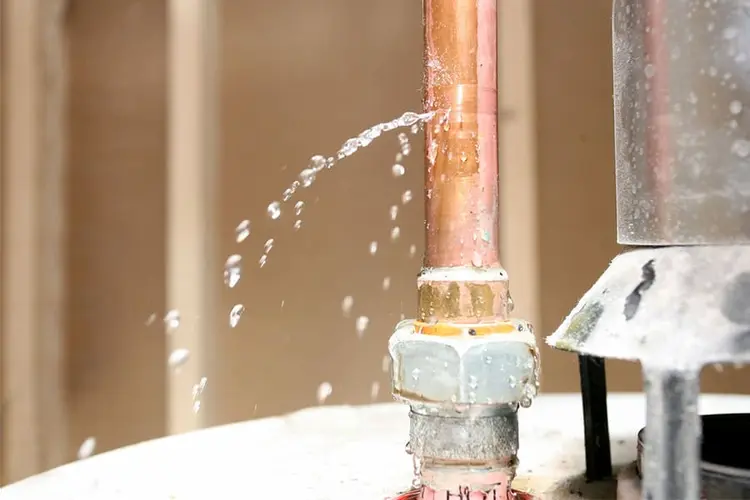Welcome to our blog! Today, we’ll be taking you through an easy guide to building your own homemade water leak listening stick. Water leaks can be a common and frustrating issue for many homeowners, often leading to wasted water, costly repairs, and potential damage to your property.
However, with a listening stick, you can detect leaks early on, saving you time, money, and unnecessary stress. Whether you are a DIY enthusiast or simply looking to be more proactive in maintaining your home, this guide will provide you with all the necessary steps to create your own water leak listening stick. So, let’s get started and empower ourselves to tackle leaks head-on!

Contents
What is a homemade water leak listening stick?
A water leak listening stick is a simple yet powerful tool that can help you detect and locate leaks in your plumbing system. This handy device consists of a long, thin rod with a microphone attached at one end.
The microphone is designed to pick up the sound of water flowing through pipes and transmit it to headphones or a speaker. This makes it incredibly easy to detect hidden leaks without the need to tear down walls or floors.
With a water leak listening stick in your toolkit, you can quickly pinpoint the source of the problem and take action before it causes any further damage.
Why a homemade water leak listening stick is Useful ?
A water leak listening stick is a valuable tool that can greatly benefit homeowners in a variety of ways. First and foremost, it allows you to accurately determine the precise location of a leak without causing any damage to your property.
This is extremely important, as it can help you identify the source of the problem quickly, saving you both time and money. Additionally, by using a water leak listening stick, you can catch leaks early on, before they have the chance to cause extensive water damage or require costly repairs.
This proactive approach can potentially save you from facing major home repair expenses in the future. Furthermore, this versatile tool can be used to check for leaks in a wide range of plumbing fixtures, including pipes, faucets, and toilets.
With its portable and user-friendly design, it is a convenient tool for DIY enthusiasts who want to take control of their home maintenance and tackle any plumbing issues that may arise.
How do homemade water leak listening sticks work?
Water leak listening sticks are designed to work by amplifying the sound of flowing water or dripping noises. Using advanced acoustic technology, these sticks are able to detect even the smallest leaks that are not visible to the naked eye.
The stick’s sensor is highly sensitive and picks up vibrations caused by the movement of water, allowing you to easily locate the source of the leak. By wearing headphones connected to the stick, you can listen closely to the plumbing system and identify any abnormalities that may indicate a potential leak.
This innovative tool provides homeowners with a quick and effective way to detect and address plumbing issues before they become major problems.
Why would I need to build my own Homemade water leak listening stick?
There may be hidden leaks lurking in your home, silently causing damage that you are completely unaware of. This is where a water leak listening stick can come to the rescue.
Unlike hiring professional plumbers, which can be quite expensive, building your own listening stick can save you a significant amount of money.
Not only that, but a DIY water leak listening stick allows you to easily and accurately locate leaks without causing unnecessary damage to your walls or floors.
This gives you peace of mind knowing that you can quickly identify and address any potential water damage in your home, all on your own.
What materials do I need to build a Homemade water leak listening stick?
To build a water leak listening stick, you will need a few essential materials. The main material required is a length of PVC pipe, preferably around 3 feet long.
This pipe will serve as the main body of the listening stick and allow you to reach tight spaces where water leaks may be occurring.
You will also need two PVC end caps to seal off the pipe at both ends, ensuring that the listening device remains secure inside.
Additionally, you will need a metal rod or solid wooden dowel to act as the handle of the listening stick, providing you with a comfortable grip as you navigate through your home in search of leaks.
Are there any safety precautions I should take when using a Homemade water leak listening stick?
When using a water leak listening stick, safety should be your top priority. It is important to wear protective gloves to avoid any potential injuries or skin irritations.
Additionally, ensure that the area where you will be using the water leak listening stick is well-ventilated to prevent inhaling any harmful fumes.
Before using the listening stick, take the time to inspect it for any damage or signs of wear and tear. It is crucial to use a reliable and fully functional tool for accurate results.
Lastly, never use the water leak listening stick near live electrical wires or in wet conditions to avoid the risk of electric shock. By following these safety precautions, you can confidently use your water leak listening stick and protect yourself from any potential hazards.
Conclusion
Building your own water leak listening stick at home can save you both time and money. With a DIY water leak listening stick, you can easily detect and locate leaks in your home without the need for professional assistance. By investing some time in building your own water leak listening stick, you can avoid costly repairs caused by undetected leaks. Having a DIY water leak listening stick empowers you to take control of your home’s maintenance and detect water leaks early on. This simple yet effective tool will allow you to stay proactive in preventing any potential water damage and costly repairs in the future.

My name is James A. Bright, and I have worked in the pool and plumbing industries for over 15 years. I started poolprosoutions.com to share my experience with you guys. Here, I provide helpful guides and tips related to pool care, hot tub care, underground water leaks, and pipe leaks.



